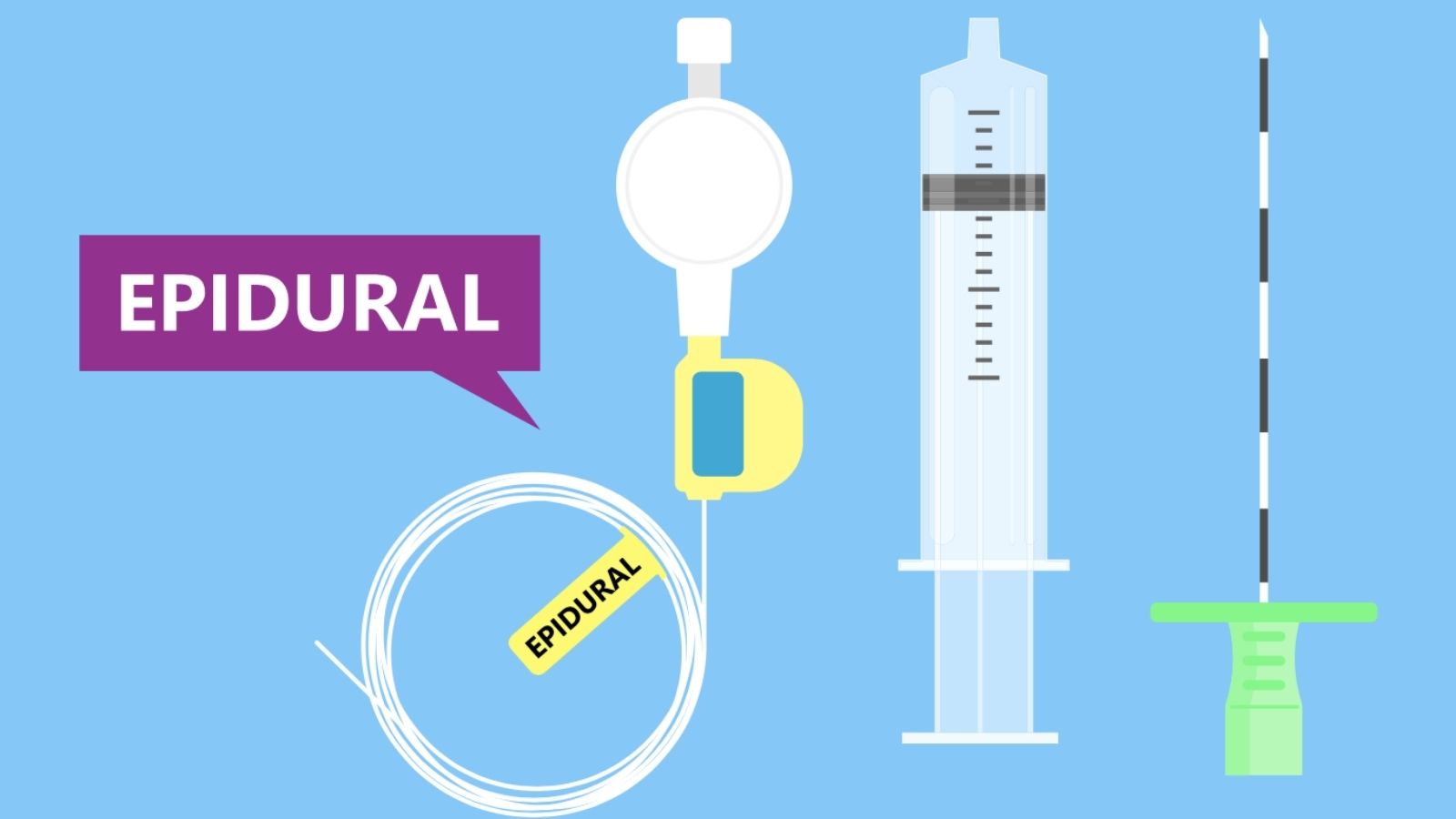Know all about Epidural
An epidural is the most commonly used medical advancement technique that delivers a blissful relief from the body-shaking waves of pain induced during labour. It is injected into the epidural space around the spinal cord. It numbs the lower portion of your body while still enabling you to remain completely alert by temporarily numbing the nerves that carry pain receptors from your uterus and cervix to your brain.
There are two ways to administer an epidural:
- In a lying position with knees bent, and
- In a sitting position while bending over from the waist, this helps expose the curve of your spine to help locate the exact epidural space.
It is important to stay completely still for a precise injection. Fix your attention on your breathing (inhalation and exhalation) to help you to remain still while the epidural is being administered. A few rounds of left nostril breathing will also help calm you down.
The advantages of these methods are that they can be administered at any given time during labour and the dosage, too, can be adjusted as and when needed through a catheter, or the catheter may be attached to a small pump that continuously supplies this pain relief medication in small dosages.
What does the expecting mother experience?
- Drop in sensation: Around 15 – 20 minutes post administering the shot, you will experience a drop in your lower body sensations. You may only feel a little pressure and little or no pain at all.
- You will have to be sedentary till the time of delivery: A strategy to distract yourself and feel less pain during labour is to be mobile, walk around or sway. A big exercise ball may also come to your rescue. In contrast to this, after the epidural, since your lower portion is numb, you will be sedentary throughout. You may not know when you are completely dilated.
- Drop in blood pressure: Labor is a tiring process in itself. Over and above this, when an epidural is injected, it may lead to a sudden drop in blood pressure. Hence, your team of doctors will monitor your and the baby’s fetal heart rate continuously until after your delivery.
- Other minor side effects: Complications are pretty rare when medication is administered in a smaller dosage. However, minor side effects can include long labor hours, headaches, nausea and back pain.
Does it affect your baby?
While is it true that an epidural is safe for the baby and does not have any long-term effects, a minuscule amount could reach your baby en route, and it may feel slightly sluggish. It may not be able to latch on immediately to its mother within an hour of stepping out into its new world.
In case of a drop in the mother’s blood pressure levels, an epidural may also cause a reduction in fetal blood and oxygen supply.
Bottom line: This blessed event is an intensely personal experience, and you need not have to travail in pain while bringing a new life into the world. Be open to what is best suited for you, as this will help your doctor decide what is best for you in that situation. Everyone out there and around you wants to make your journey not just a success, but a beautiful one to always remember. Discuss the risks and rewards that come with an epidural with your doctor, so you can make an empowered and informed decision.
It is an exhausting experience for all mothers and the little one too. But, remember to keep visualizing your baby making its way out smoothly during the entire process, and enjoy each breath taken during this delightful journey.
Also read: Tips to Boost the Supply of Breast Milk
|
From a pimple to cancer, our You Care Wellness Program helps you find a way Talk to our integrative team of experts today 18001020253 |










Leave a Reply